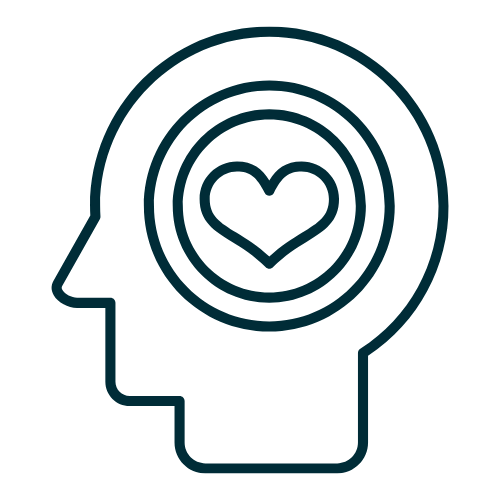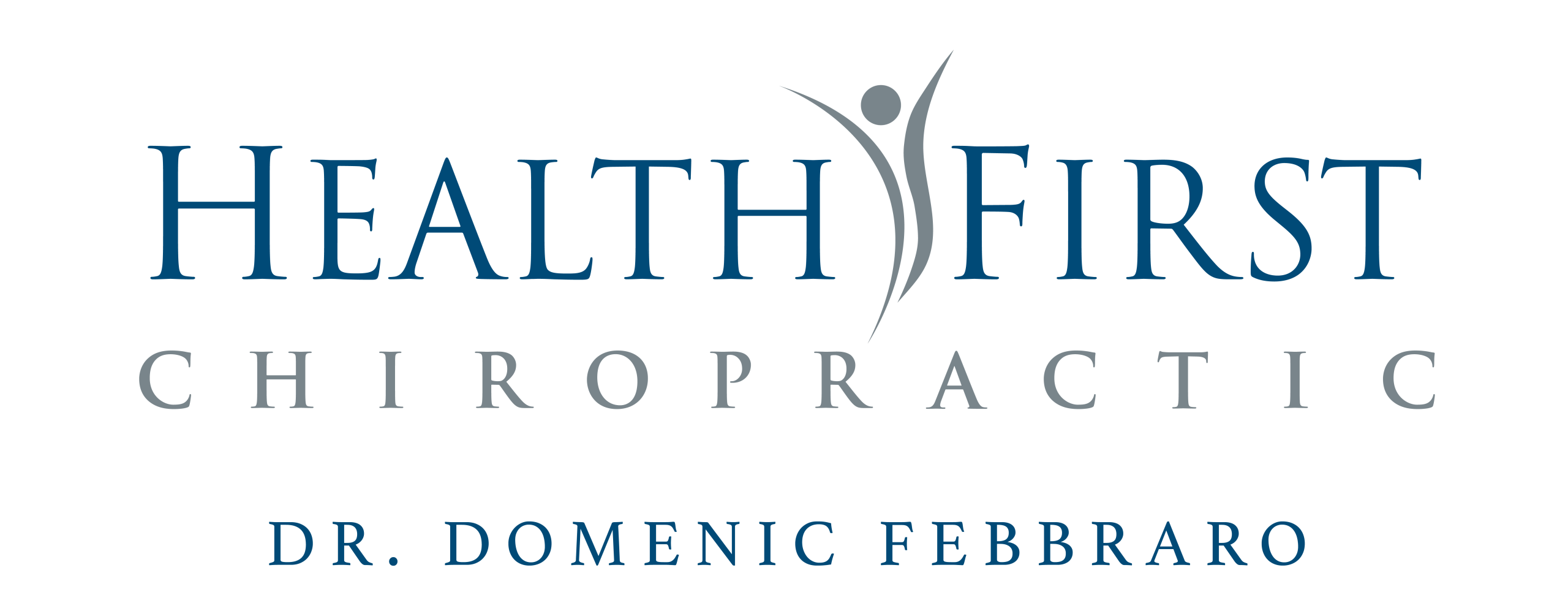
Dr. Domenic Febbraro
My Purpose
When you decide to put your health first, it immediately becomes my number one priority. Through clinical experience I have observed that so much suffering is occurring needlessly, and rooted in a lack of understanding of our innate healing ability, ultimately leading to how & why we get sick. I believe in creating a foundation for optimal health through education & partnership, and developing specific, empowering individual strategies to that end. I value the relationships I form with each client, and believe this plays a critical role in facing their health challenges and improving outcomes.
My Purpose
When you decide to put your health first, it immediately becomes my number one priority. Through clinical experience I have observed that so much suffering is occurring needlessly, and rooted in a lack of understanding of our innate healing ability, ultimately leading to how & why we get sick. I believe in creating a foundation for optimal health through education & partnership, and developing specific, empowering individual strategies to that end. I value the relationships I form with each client, and believe this plays a critical role in facing their health challenges and improving outcomes.
Our Reviews
My Story
After completing pre-medical studies at the University of Pittsburgh, I graduated with honors in 1996, earning my doctorate from Life University, School of Chiropractic. Since then, I have dedicated my career to promoting a natural approach to wellness, primarily serving the North Hills communities. My philosophy, "Health First," encourages clients to prioritize and optimize their health naturally.
My journey into Chiropractic began in high school after sustaining a neck injury during wrestling practice at Central Catholic. Chiropractic care not only expedited my recovery but also strengthened my body in ways I didn’t initially understand. While I knew adjustments were helping to realign my neck, I soon noticed a remarkable reduction in my allergies to common triggers like grass, pollen, and animals. This unexpected benefit revealed the vital connection between spinal and nervous system health—the core focus of Chiropractic—and my body's ability to heal and adapt naturally.
Through specific spinal care, I experienced an improvement in my innate (natural) immunity, and no longer relied on medications that I later learned had suppressed and weakened my body's natural defenses. This transformative experience inspired me to pursue Chiropractic as a career and share this vital connection with others, helping them achieve similar breakthroughs in their health.
My intention with every client is to empower them to understand and harness their body's ability to heal from within. By combining education and the foundational principles of Chiropractic, I aim to shift the narrative around health: sickness is not a matter of random chance, and natural healing is possible.
Koren Specific Technique
The Koren Specific Technique (KST) is a modern chiropractic method developed by Dr. Tedd Koren. It focuses on identifying and correcting subluxations and other imbalances in the body using a gentle, non-invasive approach. Unlike traditional chiropractic techniques, KST does not involve manual adjustments or high-velocity thrusts.
Physical, chemical and emotional manifestations
- Analysis: Practitioners conduct a comprehensive analysis and use a specialized tool called the Arthrostim, a handheld device that delivers gentle, specific impulses to the spine and other areas of the body. This tool helps in detecting areas of misalignment and stress.
- Adjustments: Once problem areas are identified, the ArthroStim is used to make precise corrections. The adjustments are typically painless and can be performed with the patient in various positions, including standing, sitting, or lying down.
- Patient Feedback: KST emphasizes ongoing patient feedback and involvement. Practitioners continuously monitor the body's response to adjustments and make necessary modifications to the treatment plan.
The primary goal of KST is to restore proper function and balance to the nervous system, promoting overall health and well-being. It is suitable for patients of all ages and conditions, including those who may be sensitive to traditional chiropractic methods.
- Gentle Adjustments: KST uses the ArthroStim device, which delivers gentle, precise impulses. This approach is less forceful than traditional manual adjustments, making it suitable for patients who are sensitive, in pain, or anxious about conventional chiropractic techniques.
- Versatility in Positions: KST adjustments can be performed with the patient in various positions, including standing, sitting, and lying down. This flexibility allows for more comfortable and effective treatments, especially for those with specific mobility issues or discomfort in traditional chiropractic positions.
- Non-Manual Adjustments: Unlike standard chiropractic care, which often involves high-velocity thrusts and manual manipulation, KST relies on a mechanical instrument. This can reduce the risk of injury and is generally perceived as less intimidating by patients.
- Patient-Centered Feedback: KST emphasizes continuous patient feedback and real-time monitoring of the body's response to adjustments. This allows for immediate and tailored modifications to the treatment plan, ensuring a more personalized approach to care.
- Comprehensive Assessment: The KST method involves a thorough analysis of the entire body, not just the spine. This holistic approach can identify and address issues in other areas, such as the extremities and cranial bones, leading to more comprehensive care.
- Broad Applicability: KST is suitable for a wide range of patients, including those with acute pain, chronic conditions, children, the elderly, and individuals with specific health concerns that may make traditional chiropractic adjustments inappropriate or less effective.
- Holistic Approach: KST practitioners often take a more holistic view of health, considering not just physical but also emotional and biochemical factors that may contribute to a patient's condition.
These features make KST a distinct and often preferable option for patients seeking chiropractic care, especially those who may have had limited success or discomfort with traditional methods.
Addressing Physical, Chemical, and Emotional Imbalances
The Koren Specific Technique (KST) utilizes binary biofeedback to analyze and address physical, chemical, and emotional manifestations of imbalances in the body. This biofeedback system relies on the body’s innate responses, providing clear, "yes" or "no" signals to guide diagnosis and treatment. Here’s how it works in each domain:

- Binary Feedback Application: Through muscle testing or reflex responses, the practitioner identifies structural issues such as spinal misalignments, joint restrictions, or muscular tension.
- Examples:
- The body may provide a "positive" biofeedback response when testing a misaligned vertebra or an area of tension.
- A "neutral" or "negative" response indicates no dysfunction in that region.
- Action: Using a handheld adjusting instrument or manual techniques, the practitioner corrects the misalignment based on the binary feedback until the body's responses normalize.

- Binary Feedback Application: The technique assesses biochemical stressors, such as toxins, allergens, or nutritional deficiencies, by introducing small stimuli (e.g., holding a specific supplement or chemical sample) and observing the body’s binary feedback.
- Examples:
- The body may signal "positive" when exposed to a substance that aggravates the system, such as a toxin.
- Conversely, a "negative" or neutral signal may indicate the absence of sensitivity or imbalance with that substance.
- Action: Based on the feedback, recommendations like dietary changes, detox protocols, or supplementation are tailored to optimize biochemical balance.

- Binary Feedback Application: Emotional stress is assessed by introducing thoughts, memories, or emotional stimuli while observing the body’s binary reflexes.
- Examples:
- A memory or thought associated with unresolved emotional trauma might elicit a "positive" response, indicating stored tension in the body.
- A "negative" or neutral signal suggests no significant emotional impact.
Action: Once identified, techniques such as affirmations, tapping, or guided emotional release are employed to clear the blockage and normalize the feedback response.
-
The binary biofeedback system integrates these domains seamlessly:
- Physical Issues: Often linked to emotional or chemical triggers, they show up in reflex tests.
- Chemical Imbalances: May be connected to physical or emotional stress, creating cascading effects.
- Emotional Blocks: Commonly manifest as physical symptoms or chemical imbalances, detectable through biofeedback.
By interpreting the body’s "yes" and "no" signals, KST provides a holistic and precise approach to identifying root causes of dysfunction and restoring harmony across physical, chemical, and emotional dimensions. This method allows for highly personalized and effective treatment tailored to the body's immediate needs.
Intuitive biofeedback in relationship to reflex tests refers to the practice of using a practitioner's or patient's heightened perception or intuition to interpret the body's physical responses during reflex testing. Reflex tests involve assessing involuntary bodily reactions to stimuli, while intuitive biofeedback adds an interpretive layer that focuses on the body’s subtle energetic or physiological responses.
-
The binary biofeedback system integrates these domains seamlessly:
- Physical Issues: Often linked to emotional or chemical triggers, they show up in reflex tests.
- Chemical Imbalances: May be connected to physical or emotional stress, creating cascading effects.
- Emotional Blocks: Commonly manifest as physical symptoms or chemical imbalances, detectable through biofeedback.
By interpreting the body’s "yes" and "no" signals, KST provides a holistic and precise approach to identifying root causes of dysfunction and restoring harmony across physical, chemical, and emotional dimensions. This method allows for highly personalized and effective treatment tailored to the body's immediate needs.
Intuitive biofeedback in relationship to reflex tests refers to the practice of using a practitioner's or patient's heightened perception or intuition to interpret the body's physical responses during reflex testing. Reflex tests involve assessing involuntary bodily reactions to stimuli, while intuitive biofeedback adds an interpretive layer that focuses on the body’s subtle energetic or physiological responses.
- Complementary Approach:
- Reflex tests provide a measurable, physiological foundation.
- Intuition refines and expands the understanding of the results, addressing nuances that reflex tests alone might miss.
- Energetic Sensitivity:
- Intuitive biofeedback is sensitive to subtle body-mind interactions that manifest as energy shifts, which might not be physically measurable but are felt by the practitioner or the patient.
- Holistic Analysis:
- Practitioners using intuitive biofeedback often integrate emotional, chemical, and energetic interpretations into their physical assessments.
- For example, a reflex test showing weakness in a specific muscle might intuitively be linked to an unresolved emotional issue or dietary imbalance.
- Personalization:
- Intuition allows for a more individualized approach, as the practitioner can adapt reflex testing protocols in real-time based on the body’s dynamic responses.
- During a reflex test, the body’s response (e.g., muscle weakness or tension) gives the practitioner objective feedback.
- Using intuition, the practitioner might also "sense" whether this response is tied to:
- A physical misalignment.
- A chemical imbalance, such as toxin buildup.
- An emotional or psychological stressor.
- This combined approach ensures a comprehensive understanding of the body’s needs, enhancing the accuracy and effectiveness of the intervention.
